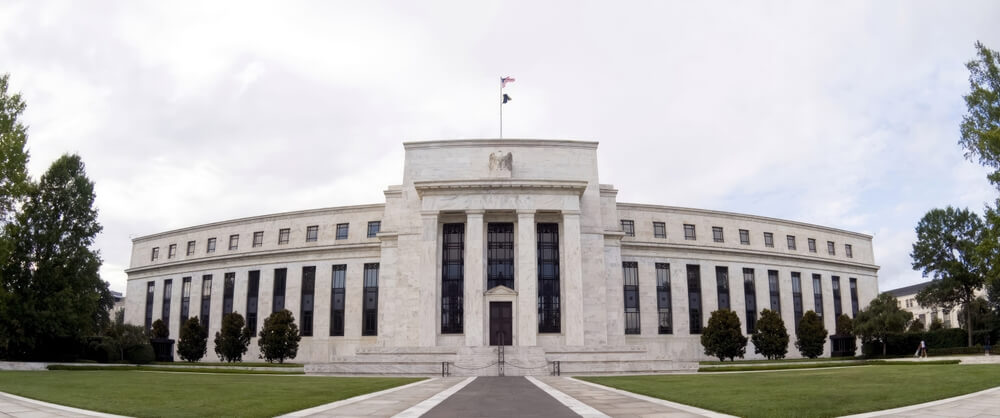As Jerome Powell approaches the end of his term as chair of the US Federal Reserve in May 2026, the central bank’s standing is lower – and its vulnerability greater – than it has been in decades.
This institutional deterioration is obvious to anyone who looks closely. Even putting aside the heightened risk of the Fed losing its political independence, one cannot ignore the mounting challenges to its dual mandate of price stability and maximum employment.
But with his term running out, Powell should not just lament on the circumstances that have undermined the standing of the world’s most important central bank.
Instead, he should focus on doing whatever it takes to improve the situation for his successor.
To see how bad things have become for the Fed, one need only read the recent Wall Street Journal commentary by Treasury Secretary Scott Bessent, widely regarded as Powell’s closest ally in the Trump administration.
After listing many ways that the Fed has erred, Bessent calls for “an honest, independent, non-partisan review of the entire institution, including monetary policy, regulation, communication, staffing, and research.”
That’s quite a list. He then used social media to step up his criticism, blaming the Fed for fueling inequality, and calling on it to cut interest rates.
Reforms are necessary
These are noteworthy and consequential remarks. Not only do they come from a sitting Treasury secretary, but they also allege a broad range of inadequacies and failures at the country’s premier financial institution. Nor is Bessent alone in his dour assessment.
A growing number of politicians and officials, not all of them firm supporters of President Donald Trump (but including the leading candidates to replace Powell), are joining the chorus calling for Fed reforms.
Reforms are indeed necessary, and for the good of the US and global economy, they should not be postponed until there is a change of leadership.
Powell should respond to the reform chorus now, even if he can do little to correct major policy failures in the short term
Powell should respond to the reform chorus now, even if he can do little to correct major policy failures in the short term.
After all, Powell most probably cannot deliver on the inflation side of the Fed’s dual mandate in the next few months, considering that annual price growth remains above the 2% target for the fifth consecutive year.
Moreover, the economy may be moving away from the employment side of the mandate, too.
Multiple indicators – including recent Bureau of Labor Statistics reports and revisions – are pointing to labor-market weakness, and historical evidence suggests that such trends can accelerate in a non-linear fashion.
Excessive risk-taking in financial markets
There is also little that Powell can do to counter the growing fears about excessive risk-taking in financial markets.
Just this week, we saw an unusual combination of traditional “risk-on” and “risk-off” assets reaching record highs: equity and gold prices have soared, credit spreads are unusually low, and the Bloomberg bond index is now in “bull market territory,” up significantly from its 2022 low.
Trends point to incipient structural changes, including foreign central banks’ shakier confidence in their holdings of dollars and Treasury bonds
This combination is a warning signal, and not only for those at the Fed who are focused on maintaining financial stability – the central bank’s third, less explicit objective.
Such trends also point to incipient structural changes – including foreign central banks’ shakier confidence in their holdings of dollars and Treasury bonds – that could undermine the global attractiveness of US financial markets if they persist.
Powell has a unique opportunity to help the Fed change course
Though Powell is highly unlikely to deliver on either the inflation or employment aspects of the Fed’s mandate before he leaves, he can, and should, do more to address other issues that are equally important for the economy.
There is now widespread agreement that reforms are needed to enhance the Fed’s effectiveness and salvage its credibility.
 With the Fed at risk of slipping on all aspects of its mandate, continued inaction by Powell would leave the institution even more damaged
With the Fed at risk of slipping on all aspects of its mandate, continued inaction by Powell would leave the institution even more damaged
They are urgent because the Fed is currently finalizing its periodic monetary-framework review, and judging from its soft opening at last month’s Jackson Hole Symposium, this one could soon become as irrelevant as the 2020 one unfortunately was.
As he approaches the end of his term, Powell has a unique opportunity to help the Fed change course.
The central bank’s problems are numerous, extending from its culture and lack of accountability to its communications, failure to own up to past mistakes, faulty target-setting, and groupthink.
Fortunately, there are plenty of examples from other central banks on how these can be addressed.
To that end, several commentators have offered specific remedial measures. For example, a working group organized by the G30, a body largely composed of highly respected former policymakers, recently published a comprehensive roadmap of recommended reforms.
A couple of months ago, I suggested a path that Powell could have taken to avoid the intensified political attacks that are now being directed at the entire Federal Reserve System, including the regional banks. He did not take it, and the attacks have only intensified.
With the Fed at risk of slipping on all aspects of its mandate, continued inaction by Powell would leave the institution even more damaged.
The past three months have already been massively consequential for the Fed; but the next few could be even more so.
Mohamed A. El-Erian, President of Queens’ College at the University of Cambridge, is a professor at the Wharton School of the University of Pennsylvania, an adviser to Allianz, and Chair of Gramercy Fund Management.